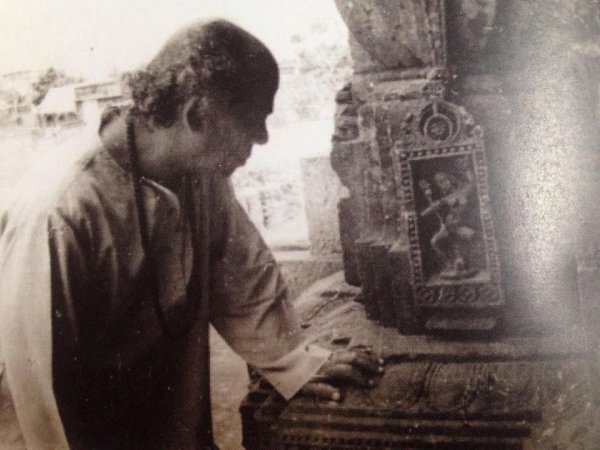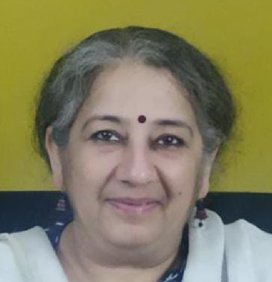
|   |

|   |
Performance by Nrityashilp Guru Surendra Nath Jena Odissi Dance Foundation - Dr. Manju Chellani e-mail: manjuchellani@gmail.com May 3, 2025 All arts are a form of worship of the Ultimate Creator. A true artiste forgets herself and works only for carving out a path to God through her art. Guru Surendra Nath Jena was such a believer. When he danced, he would lose himself and the sense of any audience around him. He had said: “Unless the soul is pure, god will not dance through you. And once you start dancing for god, with god, then you don’t care about anything else”. A maestro of Odissi dance, he developed a distinct style of the form in the 1960s. This style was informed by some characteristics which were based on his personal convictions of the inter-relationships between the lives of all human beings, God, history of Odisha and the origins of the Odissi dance. First of these characteristics was that though the development of the Odissi dance in the post-independence era, as a whole was largely inspired by the sculptures at the Konark Sun Temple, Guru Jena perceived them to be representing connected stances of the same piece. This was different from the traditional perception of the sculptures representing centre-piece movements. Secondly, he gave an equal place to the bibhatsa rasa and raudra rasa in his compositions. This was different from the prominence placed on the shringar rasa in the traditional oeuvres. Thirdly, his compositions emphasized far more on the rural life of Odisha than was done usually. He had started teaching this style at the Triveni Kala Sangam, New Delhi in 1968; and continued to do so till some years before his passing away in 2007. His legacy has been continued by his daughter Guru Pratibha Jena Singh who is the founder-director of the Nrityashilp Guru Surendra Nath Jena Odissi Dance Foundation which is dedicated to raising awareness about the philosophy and dance style of her Guru-father.  Guru Surendra Nath Jena in a reflective mode, while looking at a temple sculpture in Bhubaneshwar, Odisha. (Photo: Source unknown) It is in consonance with the above that a dance program was organized at the auditorium in the Shree Dharma Saastha temple (Ayappa temple) in Sector 6, Pushp Vihar, Delhi on 14 April 2025. This day marked Vishu, the first day of the new year according to the Malayali solar calendar (and as per the solar calendar of many regions in India). All the performers were from the Nrityashilp Guru Surendra Nath Jena Odissi Dance Foundation and trained in the Guru Surendra Nath Jena style of Odissi dance: Raudri Singh, Swaati Chattopadhyay, Ridaiya Behera, Shruti Giri, Roshni Unnikrishnan and Nidhi Kindra. They are all disciples of Guru Pratibha. Raudri and Swaati are her senior disciples and had also been disciples of Guru Surendra Nath Jena. They showcased some of the most significant and lofty compositions – either choreographed by Guru Jena or inspired by him. The backdrop of the stage was a full-length image of the Shree Dharma Saastha temple, providing the perfect setting for the devotional nature of the performances.  Swaati Chattopadhyay and Raudri Singh performing Jagannath Mangalacharan Credit: Sunita Giri The program commenced with Jagannath Mangalacharan by Swaati, Raudri and Ridaiya. The 3 dancers complemented each other’s steps in a soulful invocation for blessings for an auspicious beginning of the performance. This was followed by Bhangi, a piece of abhinaya, which depicted the activities of Krishna at his most active and playful. It was performed by Roshni and Shruti. Then followed Konark Kanti, a pure nritta dance, which had been choreographed by Guru Jena as a tribute to the dance sculptures at the Konark Sun temple. It was performed by Nidhi who is trained in both the Odissi and Bharatanatyam dance forms. Next was Ahe nila sayila, an abhinaya dance, which is based on the poem by Salabeg, describing the various manifestations of Lord Vishnu to protect his devotees. The present piece depicted the story of an elephant devotee caught by a crocodile whom Lord Vishnu rescued by killing the crocodile with a chakra. This was performed by Raudri, Swaati, Shruti and Roshni. The program ended with Hanuman Chalisa, which has been choreographed by Guru Pratibha. It is also a piece of abhinaya and depicts the various roop of the deity Hanuman, as illustrated in the sacred text. It was performed by Raudri. This program was followed by devotional performances by students of other institutions, and religious ceremonies. The entire ambience of the evening felt like a homage to the pious nature of the day and imbued the performers and the audience alike with a spiritual fervor. And this, Guru Surendra Nath Jena would have said, is the quintessential and most hallowed purpose of all art.  Dr. Manju Chellani is an independent writer based in New Delhi whose area of research and writing include environmental history; rights of animals; rights of nature; issues related to cultural heritage; relationship between society, literature and movies, among others. Being a disciple of Odissi dance, she writes on its various dimensions, focusing on the Guru Surendra Nath Jena style. She is also a member of a number of book discussion forums and has co-initiated an online theme discussion group. |